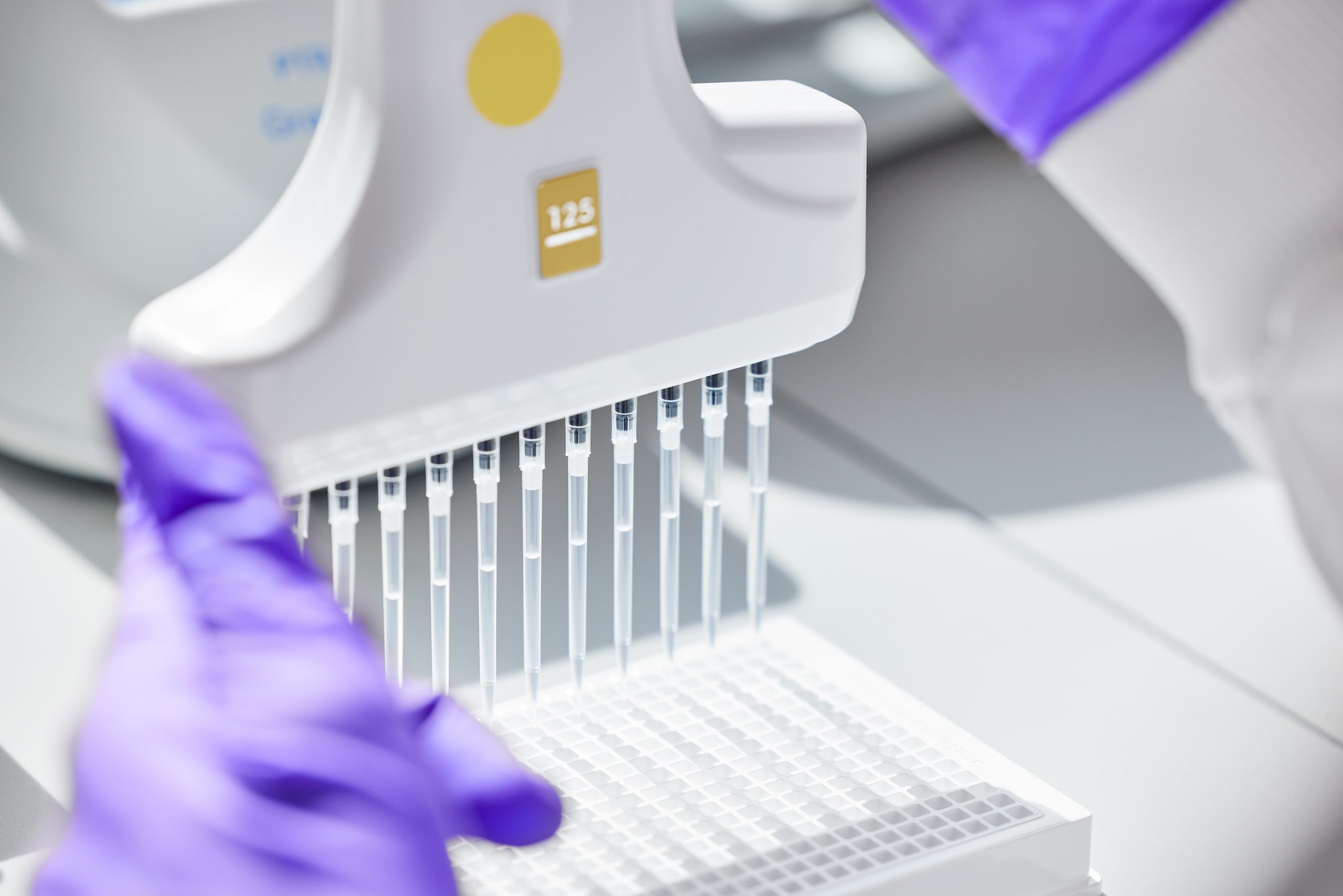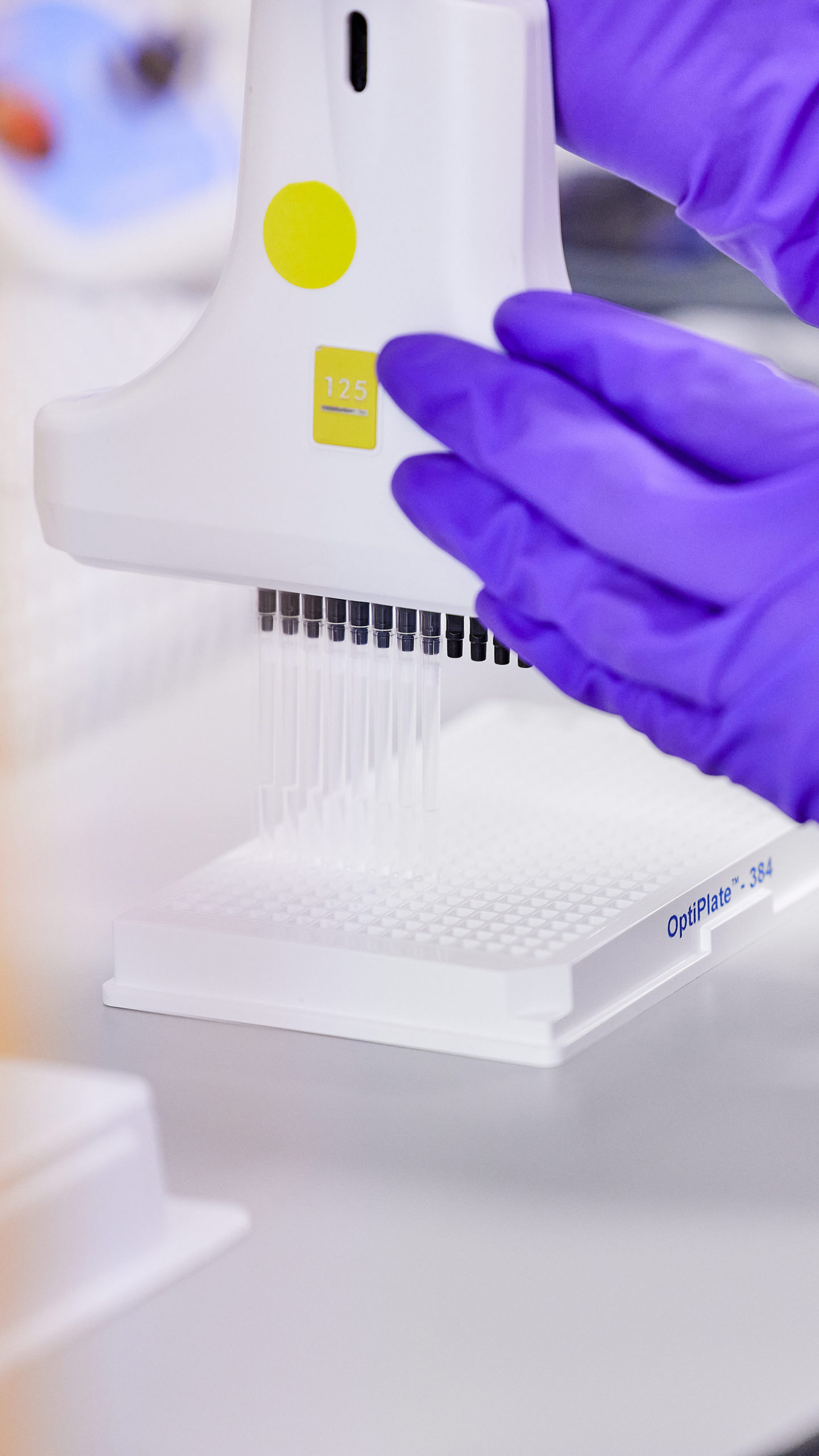

Therapeutic Modalities
Introduction
An entirely new approach to targeting disease
Bicycle® molecules are a new kind of novel molecule. Their unique structure can deliver high precision to their chosen targets, while their size and surface area means they can potentially engage targets that have historically been resistant to conventional modalities. They are designed to address significant unmet medical needs in patients.
Bicycle molecules are formed by constraining short linear peptides into a stabilized bi-cyclic structure using a central chemical scaffold. This constraint confers attractive drug-like properties, including the potential for high affinity to the designated target. It also allows the peptides in the two loops to adopt biologically relevant secondary and tertiary structures, such as alpha helices and loops – these are features often found in proteins and protein ligands, allowing Bicycle molecules to effectively mimic protein-protein interactions. This, coupled with the large surface area presented by the molecule, will hopefully allow targets that have historically been intractable to small molecules to be readily targeted by Bicycle molecules.
Bicycle molecules are unlike conventional small molecules in that they can be readily conjugated to other chemical payloads, or indeed to other Bicycle molecules, without losing their desired pharmacology. Bicycle molecules combine the pharmacological properties normally associated with a biologic with the pharmacokinetic and synthetic advantages of a small molecule. Their attractive pharmacokinetic properties enable Bicycle molecules to quickly leave the vasculature and distribute rapidly to target tissues and tumors, enabling delivery directly to the required site of action. Here, we believe their pharmacological selectivity to disease associated targets, will allow for the precision guidance of a therapy specifically to the required site of action within the disease tissue.
Key Properties

Short peptides consisting of 9-20 amino acids

Chemically synthesized

Low molecular weight (1.5-2.5kDa), delivering rapid tissue penetration and tuneable PK

Large molecular footprint allowing protein-protein interactions to be targeted

Fully synthetic New Chemical Entities (NCEs)

Ability to multimerize together or conjugate to a range of therapeutic payloads

Renal elimination, potentially minimizing toxicological burden on liver and gut

Scalable and controllable manufacturing using established methodologies